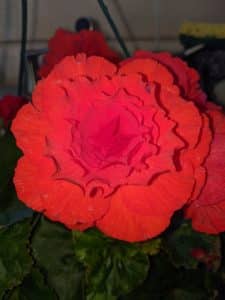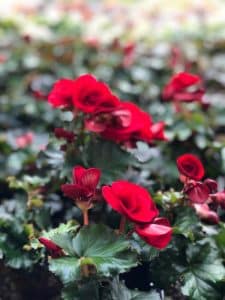Begonias come in various shapes and sizes, with blooms in every color of the rainbow. And while they may be easy to care for, you still need to know a lot about them if you want to keep your begonias healthy and looking their best. Many Begonia varieties thrive in warmer climates, including the non stop begonia, which gets its name due to its continuous flowering nature. Let’s look at how to grow and care for the non stop begonia.
| Botanical Name | Begonia non stop, Begoniacaeae family |
| Common Name | Non stop Begonia |
| Plant Type | Annual |
| Flower Color | Red or dark pink |
| Size When Mature | 6 to 12 inches |
| Bloom Time | Early Spring to fall |
| Sun Requirements | Partial Sun |
| USDA Hardiness Zones | 9 to 11 |
| Soil PH Range | 5.5 to 6.5 |
| Soil Type | Slightly acidic, well-draining |
| Water Needs | Medium |
| Native Area | South America |
What you Need to Know About Non stop Begonia
Begonia non stop is a beautiful flowering plant that keeps producing blooms from early spring to fall. They are versatile plants that can be grown in a pot, flower bed, or hanging basket.
How to Care for Non stop Begonia
Here’s everything you need to know about growing and caring for a thriving non stop begonia.
Light
Non stop begonias prefer filtered or indirect sunlight. They are shade-tolerant and cannot withstand the full sun for long periods. The flowers can become bleached if grown in areas with too much sun, while plants in shaded areas are likely to become leggy.
Water and Soil Needs
Non stop begonias do best in well-drained, moist, but slightly acidic soil with a pH of 5.5 to 6.5. They should be watered regularly and evenly, taking care not to overwater or underwater them.
Temperature Requirements
In terms of temperature, non stop begonias prefer warm and humid climates. These plants prefer temperatures of around 75 degrees but can survive in a slightly cooler climate.
They grow well in USDA climate zones 9 to 11 but should be brought indoors when temperatures drop below 50F at night.
Fertilizer
The best fertilizer for non stop begonias is a balanced liquid fertilizer applied every 2 to 3 weeks during spring and summer.
You can also use a slow-release fertilizer or compost tea to help keep your non stop begonias healthy and looking their best.
Common Diseases
Non stop begonias are relatively resilient plants and do not typically encounter any serious diseases. However, you may need to take steps to prevent powdery mildew or other fungal infections by adequately spacing your plants and providing proper air circulation. Begonias are also considered fairly deer resistant.
Non stop Begonia Propagation
There are a few different ways to propagate non stop begonias, including stem cuttings and division. You can also collect the seeds after the flowers have bloomed and died back.
The easiest method is probably by taking stem cuttings and rooting them in water or soil. To do this, simply select a healthy stem with at least three sets of leaves on it and remove the bottom set of leaves. Then, dip the cut end in rooting powder, and place it in moist soil or water to root.
Non stop begonias can also be propagated by division, which involves digging up a clump of plants, separating them into individual plants, and replanting each one in fresh soil. This method is best suited for older or overgrown plants since it may be difficult to break apart a thick clump of begonias.
Conclusion
If you want to keep your non stop begonias looking their best, it is crucial to know how to care for them properly. With the right amount of light, water, humidity, and nutrients, these beautiful flowers will thrive in your yard and produce long-lasting blooms.


